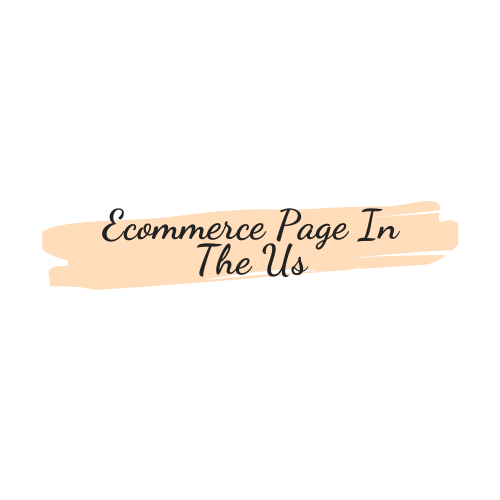See our services : Blockchain development services, Backbase Solutions
Product life cycle (PLC). Are there 4 or 5 stages?
Cats have nine lives, according to some people. But, as it turns out, so do products.
It can be difficult to develop a new product if you have been involved in the eCommerce industry for some time. Your product will need constant innovation even after it is launched to the market.
Take Apple. In 2007, the iPhone was first sold. The iPhone is now in the hands of over a billion people. The iPhone 13 and the iPhone 1 have many differences, but they are more alike. The iPhone 1 is still popular, but no one would spend the money to purchase it.
This is the product cycle (PLC) in action. It is essential that your business has a solid understanding of the PLC. This blog will cover the different stages of PLC as well as how to manage PLC in your business.
What is a Product Life Cycle (PLC)?
Product Life Cycle (PLC), refers to the time between when a product goes on sale to consumers and when it leaves the market. Although the number of stages is not known, it is common to break this down into multiple stages.
The PLC theory was first proposed by Raymond Vernon, an economist in the 1960s. Vernon believed that no product can last forever. A product’s lifespan is determined by its growth.
The Global Awarded Magento POS – 2021 Stevie Awards Product Innovation winner provides you with a powerful Magento POS as well as 24/7 support. Other products : Shopify Pos, Bigcommerce Pos, Woocommerce Pos
The PLC theory has become a popular concept. It affects everything from the stock a company orders to how it markets itself. It is possible that you too are using the PLC theory, even though you may not be aware.
What are the stages in a product’s lifecycle?
What are the stages of the PLC? Sources say it involves four. Some sources say four. Others, five.
We believe six is the best number for eCommerce. You can track the product’s movement between different hands and develop targeted strategies by breaking down the PLC into six stages.
01. Development
This stage, the earliest of the PLC, is where your product idea becomes a reality. The idea is being thoroughly researched and tested before it’s developed into a product that can be sold.
This stage can take many years. For Tide, , this stage was eight years long. It is responsible for Tide Pods’ development. The company created more than 450 sketches of product packaging. The company also consulted 6,000 customers in the research process. They developed many formulas, including the Free & Gentle line of unscented pods.
02. Introduction
Your product is now officially introduced to the marketplace. This means that your product is officially launched. You’re likely entering this stage with a lot of momentum if you already began promoting your product during its development phase.
Apple did its best while the iPhone 1 was in development. The iPhone 1 was unveiled in January 2007, but the phone would not be available for purchase until six months later. This is how it ends: Apple sold 1.91 million iPhones in its first year. It was a remarkable success story for a product so far ahead of its time.
03. Growth
Consumers are now aware of your product and there is growing demand. There are many competitors. There are always new feature requests. Customers are asking questions.
It brings back memories of 2008 when the iPhone was just one year old and Google launched its first Android smartphone. Microsoft Windows and Samsung followed suit shortly thereafter with their first Galaxy Tablets (a touchscreen device that competed against the Apple iPad). Smartphones began to outsell PCs in January 2011. Gartner reported 100,000,000 smartphones against 93 million PCs sold during Q4 2010.
04. Maturity
This stage is the end of rapid growth. Your item is now a well-known product. It is likely that many of your target customers own it. Although sales are still high, they are starting to fall. This stage is also the most profitable and often the most innovative.
You will likely be updated on your product during this stage: new flavors, scents, and new features. There is intense competition. To remain competitive with new manufacturers, your product price may drop. To be the most trusted brand, you must differentiate your product and improve brand positioning.
05. Saturation
According to some definitions of PLC, saturation is included in the “maturity” phase of the PLC. We believe that it is worth its own mention, as this phase has a unique set if traits and challenges.
This stage is when most people in your market have your product. Because you have already published many versions of your product, innovation is harder. Competition is fierce.
Your customers understand your product, which is a bright side. This market is mature and ready to purchase products similar to yours. Therefore, your focus should be less on teaching people about your product and more on building loyal customers and a community that supports your brand. If you don’t distinguish your brand, your product could be at risk.
06. Decline
All good things must end, unfortunately. Some products fall because they are no longer technologically relevant. We’re thinking of Blackberry. Others are obsolete due to a loss of market share or failure to adapt.
Yahoo’s story is worth remembering. Yahoo was once the most visited website in the world. But, Yahoo has fallen from grace since Google arrived.
According to Fast Company, former Yahoo creative director Tom Parker said that Yahoooo had a narrow mindset. “Yahoo was focused on content and putting it in front users. They owned the world but didn’t look to the sky.
Tide Pods: The complete PLC in action
Let’s look at laundry detergent to see the complete PLC in action. Before 1945, when the washing machine was invented, people used a simple soap and a scrubboard to clean their clothes.
The 1960s welcomed enzymatic laundry detergents, stain removers, and pre-treatments for the first time–followed by fabric conditioners/softeners in the 1970s. Over the next 40-years, laundry detergent underwent many other iterations, including temperature detergents and color-safe bleach.
Then, Tide Pods came around. The single-dose laundry detergent was encapsulated in PVA pods (water soluble polyvinyl al) and marked a breakthrough within an already saturated market.
Tide Pods entered its “introduction” phase in 2012 Procter & Gamble spent heavily over the next few years to educate consumers about the pod and create demand.
P&G shifted its strategy after pods became popular to develop new products with different features such as odor control, hypoallergenic material, softening and so on.
Today is the result. Today, the ubiquitous laundry pods are in the maturity phase of their lives and continue to evolve.
A PLC management strategy is essential for eCommerce businesses
eCommerce strategies and tactics are directly linked to product life cycles, as shown above. Your business will have a different approach depending on the stage of your product.
- You’re probably in the development stage and you are focusing your efforts on educating your customers and reaching product-market fit.
- You’re at the introduction stage and you are focused on creating interest. It could be that you are creating a new market or trying to capture market share from an established product or category.
- You might be in the growth stage and optimizing your product or getting feedback from customers.
- You’re likely to launch new features or variants of your product in order to increase product sales and gain repeat customers .
- You’re currently in the saturation phase and you need to reevaluate your core differentiations, including price and customer services.
- You’re trying to revive demand, diversify audience or sell excess inventory to make way for new products.
In a nutshell the PLC helps you be realistic about your product’s salesability and to direct your energy accordingly.
The iPhone: A success story of product life cycles
We are aware that we have mentioned the iPhone many times before (and this is not sponsored). The iPhone is a shining example of PLC. This is a great example of how a product can endure in its growth and maturity stages for many decades before it dies.
This is how it plays out in Apple’s Apple case:
- Development 2007– Apple announces the iPhone 1 in development. Steve Jobs held the first iPhone in person at the Macworld convention in January 2007. With its groundbreaking features, the new phone is sure to impress. It includes headset controls, camera and internet access.
- Introduction (2007) – The iPhone is officially released in stores on June 2007. Apple sells just 1.4 million iPhones in that year, and then nearly 12 million the following year.
- Growth (2008-2014): Apple launches the iPhone 3G. The iPhone 3G was sold more than one million units in its first weekend. The iPhone 3G continues to be popular and attracts a loyal following. Apple is constantly improving the quality of iPhones and testing different sizes and device types (e.g. Apple Watch) as customers become more familiar with them.
- Maturity (2015) – 2018 – iPhone unit sales reached a peak in 2015 at 231.2 Million phones, up from 169.2 millions in 2014. From 2016 to 2018, sales ranged from 212 to 228, on average, per year. Apple is up against competitors like Samsung, Google and Motorola.
- Saturation (2019-present) – More 6.6 Billion people around the world now have a smartphone. This is just 84% of the global population. Apple holds 31% of the global smartphone market share, which is 31% as of Q4 2021. Although this is 34% less than the previous year, it still surpasses their closest competitor, Samsung which had 8% market share in Quarter 1 2021.
- The iPhone is still in its last days. Despite a decline in the smartphone industry during Q3 2021, sales of the iPhone 13 rose to 15%. Will Apple be able to keep up with the rest of the smartphone industry? The only way to find out is time.
source https://www.wix.com/blog/ecommerce/2022/03/product-life-cycle-ecommerce

